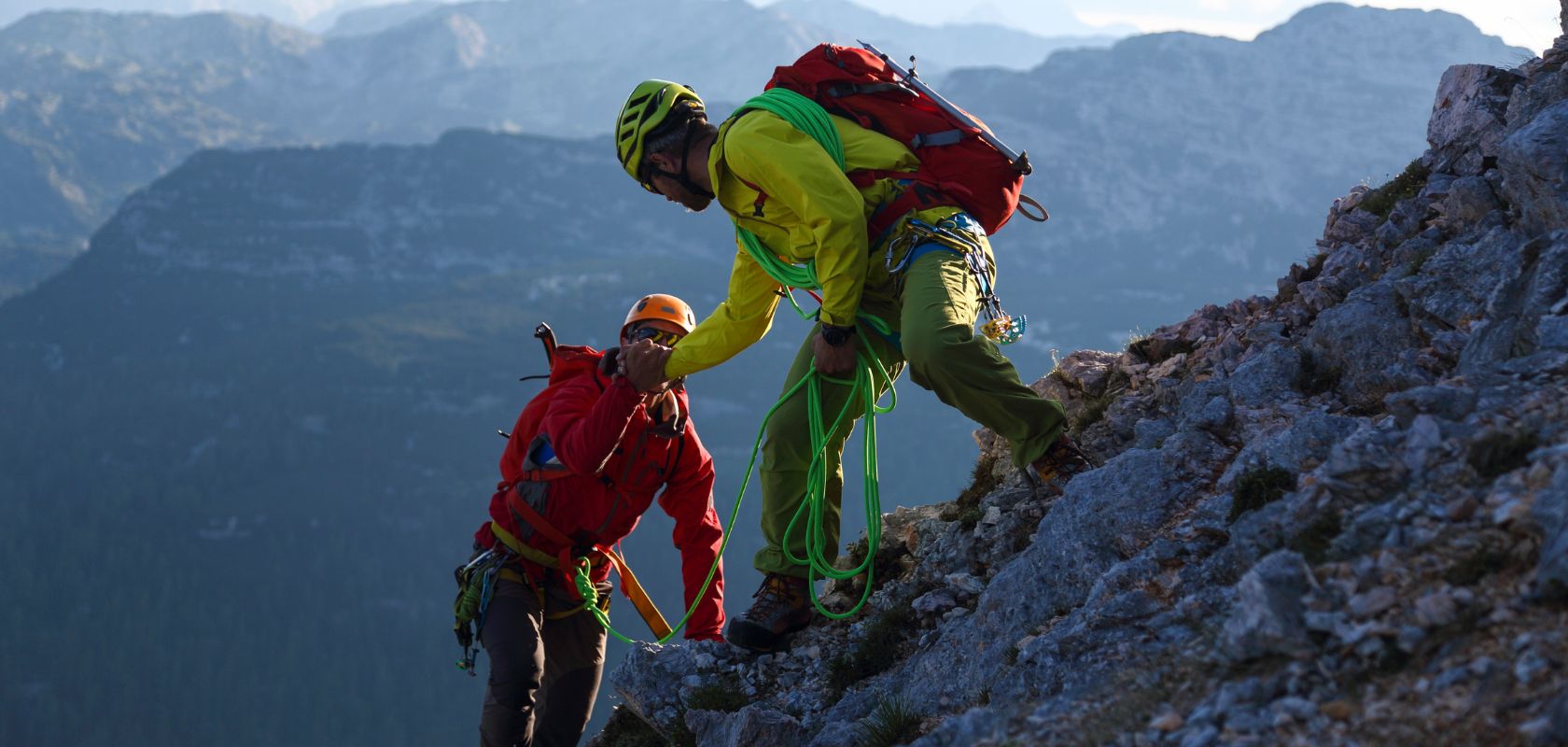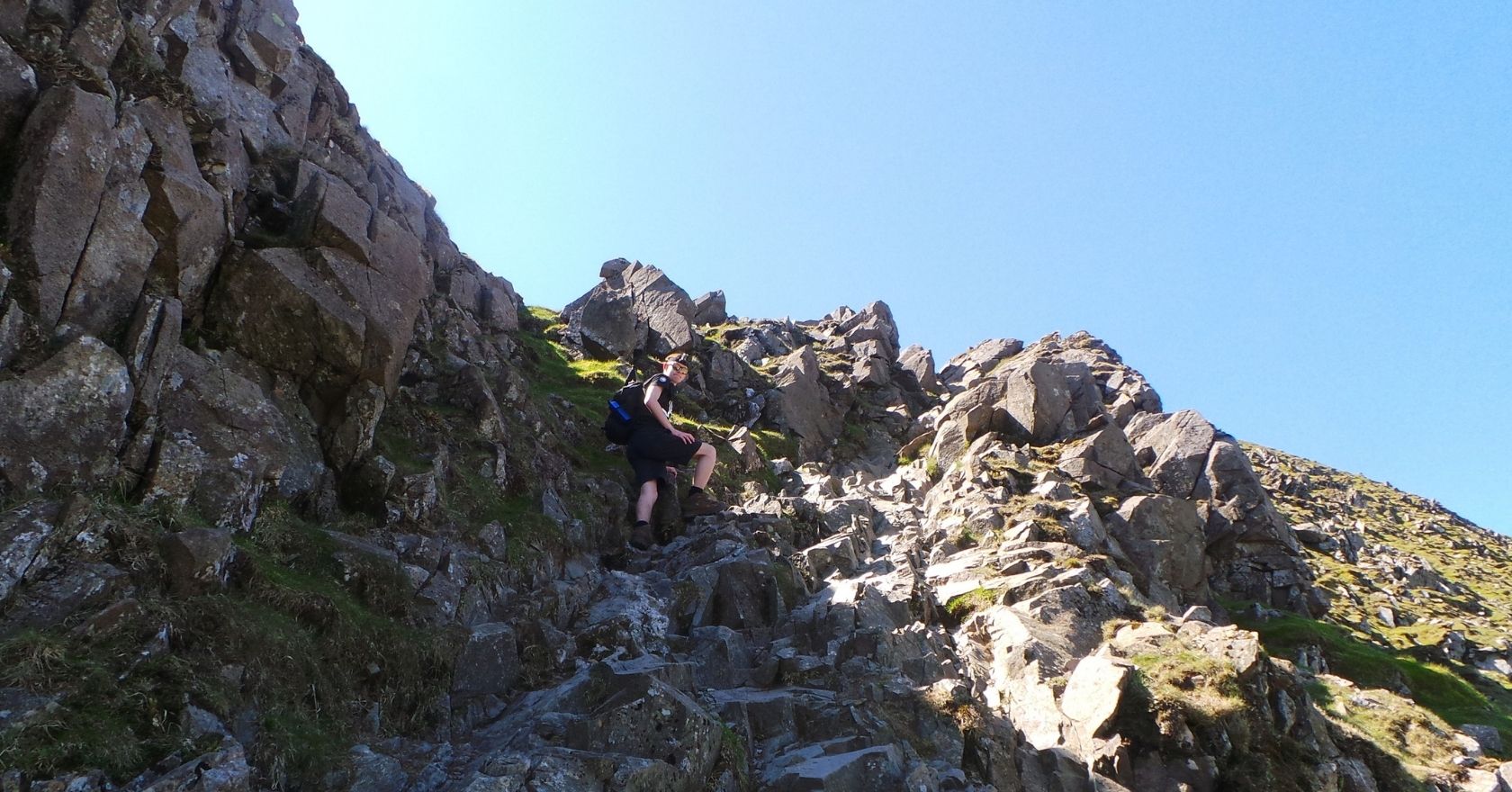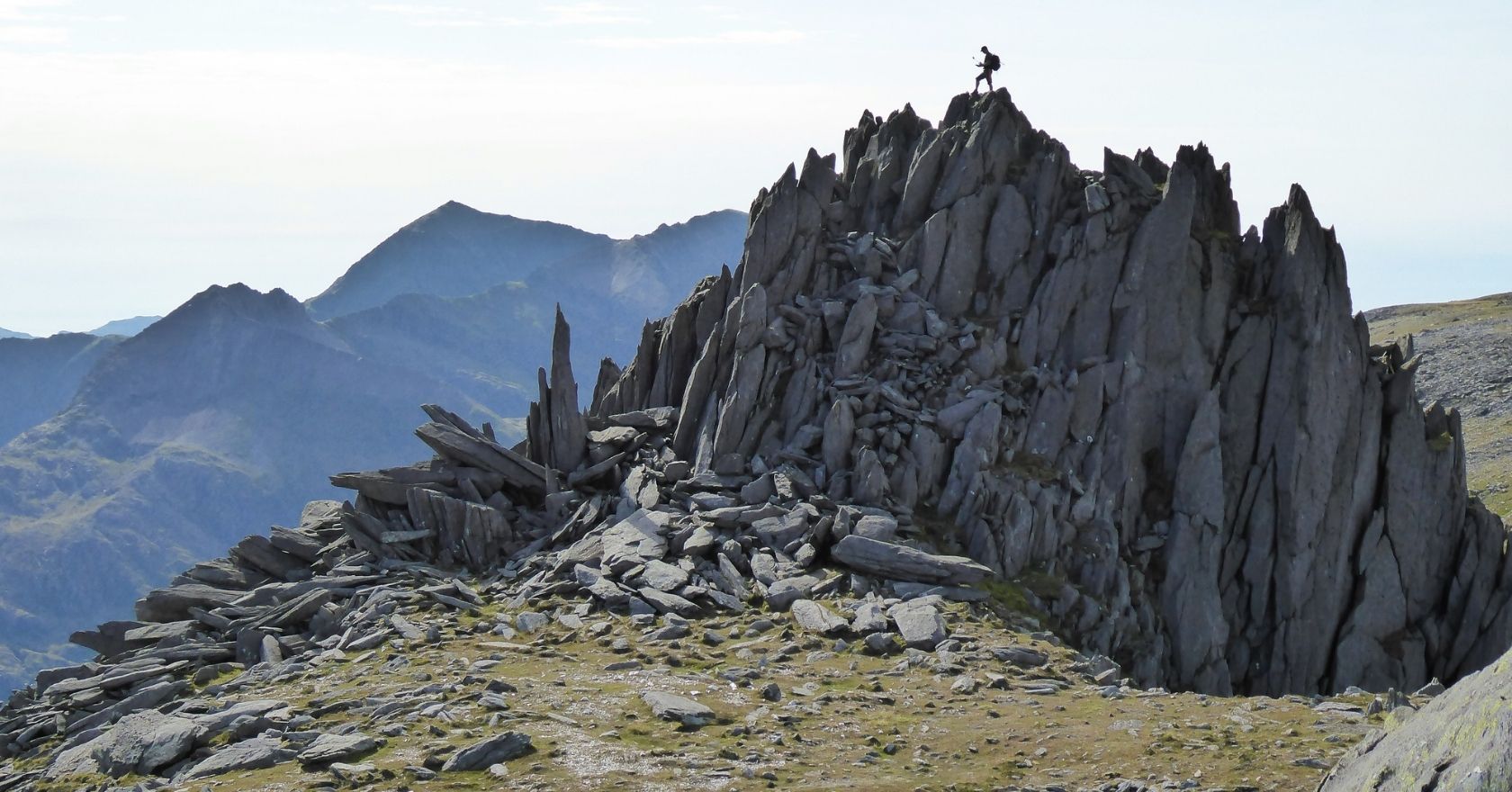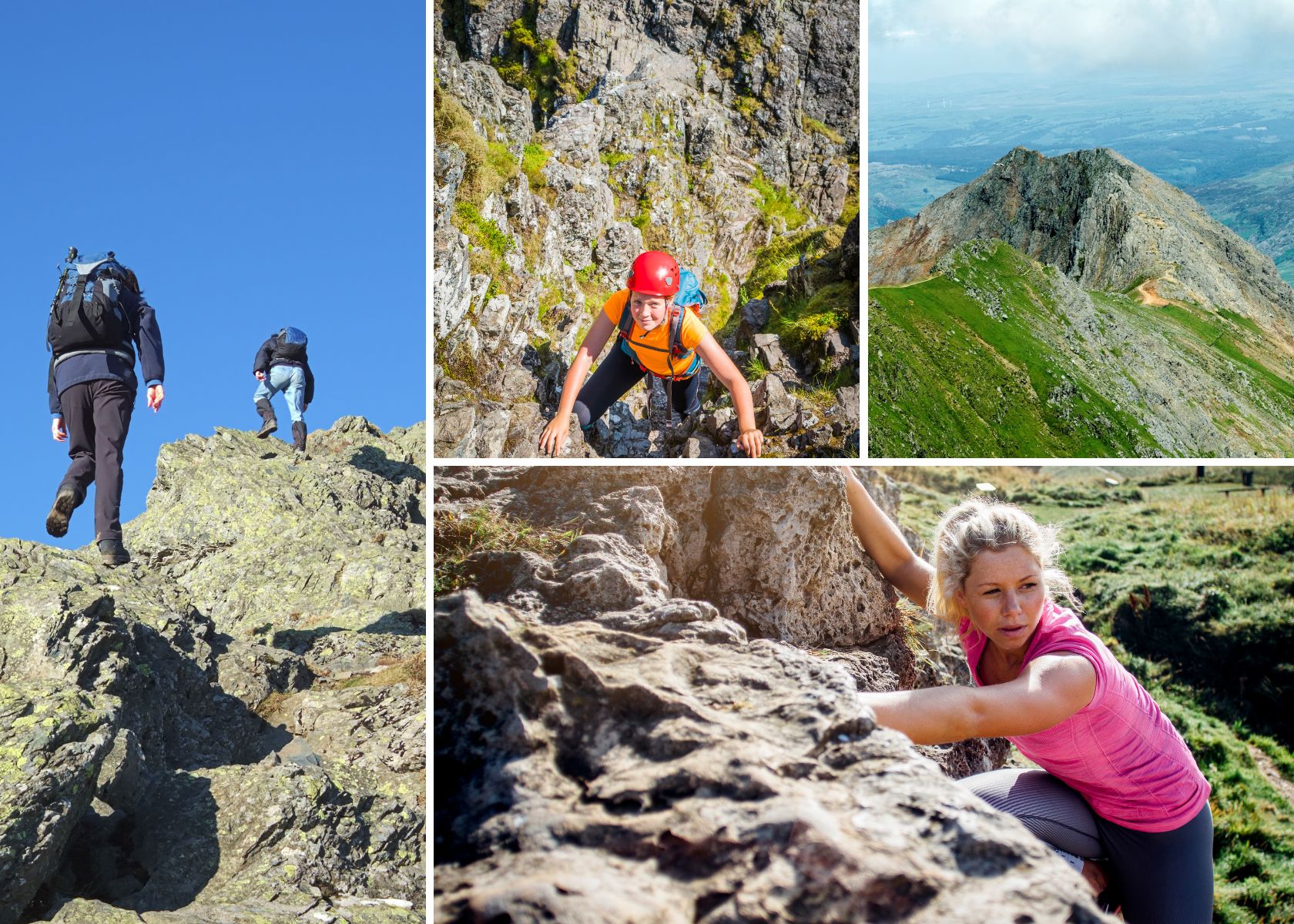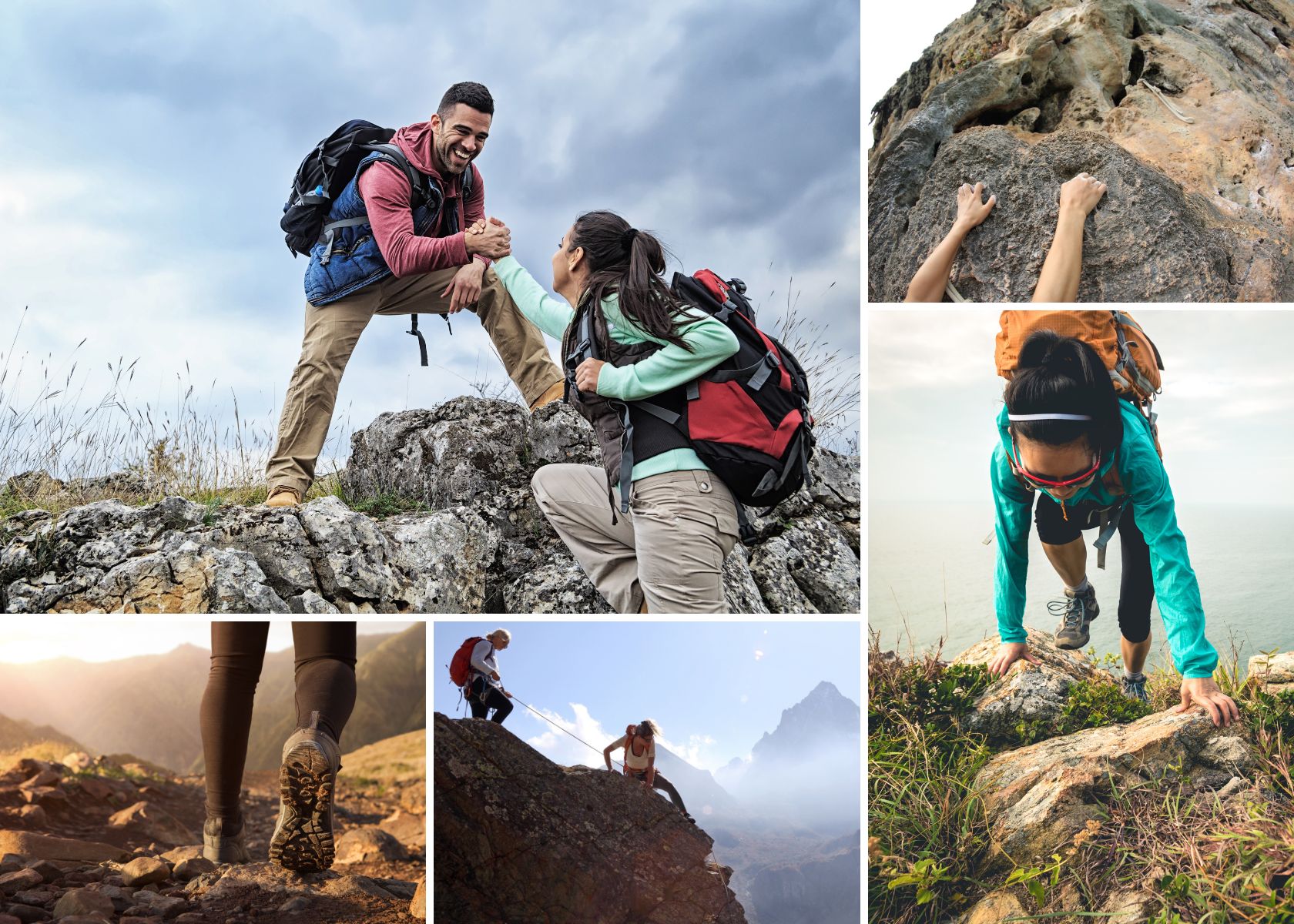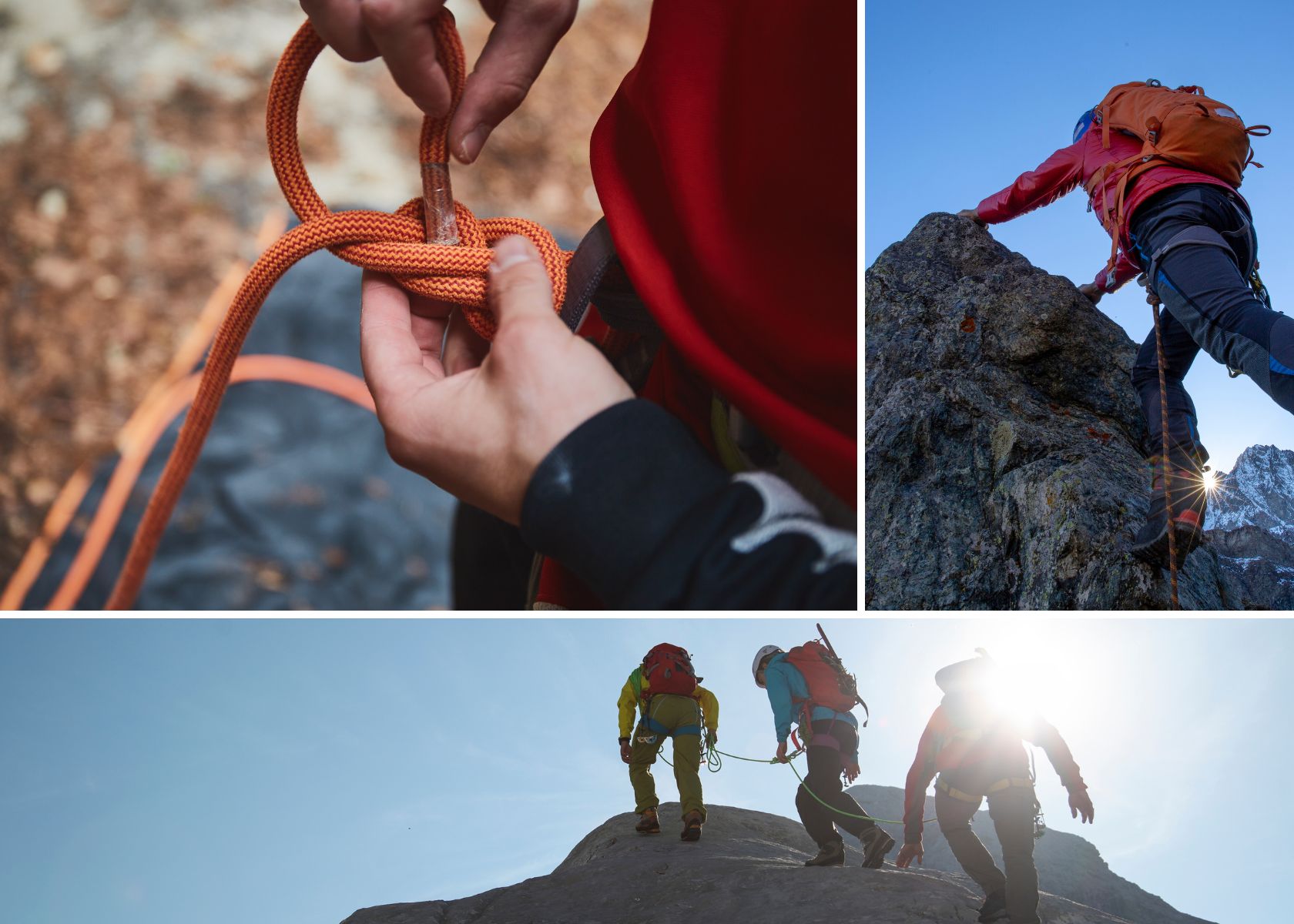THE ULTIMATE GUIDE TO SCRAMBLING
Want to inject a dose of climbing into your walk without needing all the gear or expertise? Then try scrambling. The perfect mix between hillwalking and climbing, it’s great for adrenaline seekers wanting to up the ante and push boundaries. Here we take you through everything you need to know to get started.
What is Scrambling?
Scrambling is best described as ascending steep terrain using your hands as well as your feet, often without technical climbing gear or a rope. It occupies the middle ground between walking and climbing: more demanding than hiking, but not as technical as full rock climbing. You’ll use all four limbs and encounter rocky ridges, slabs, chimneys, and gullies—sometimes with serious exposure.
Key Features of Scrambling:
- Steep ascents requiring handholds
- No fixed ropes for most routes (though ropes may be used for higher grades)
- Route-finding skills are essential
- Sure-footedness and a head for heights matter
There is a grading system (covered below) that helps you select routes suitable for your ability and appetite for adventure.
The Grading System: Understanding Scramble Grades
Scrambling in the UK is typically divided into three grades:
| Grade | Description |
|---|---|
| 1 | Straightforward with little technical difficulty; rope rarely required except for nervous scramblers. |
| 2 | More sustained and exposed; ropes may be helpful for tricky sections. |
| 3 | Contains sections akin to easy rock climbing; ropes and technical gear are advisable for safety. |
As a beginner, it’s sensible to start on Grade 1 routes, progressing as your confidence and technical ability grow.
Essential Scrambling Equipment
Having the right kit means staying comfortable, safe, and prepared for whatever the mountain throws your way. Equipment varies depending on grade and exposure.
The Scrambler’s Kit List
Essentials for All Scramblers:
- Lightweight daypack
- Good-fitting boots with sticky soles for grip
- Weatherproof clothing (layers, waterproof jacket and trousers)
- Map and compass (plus guidebook or topo)
- First aid kit, headtorch, whistle
- Gloves for grip and hand protection
- Ample water and high-energy snacks
Additional Kit for Grade 2 and 3 Scrambles:
- Helmet—crucial for loose rock
- Harness and climbing rope (30–60m, depending on group and route)
- Belay plate and carabiners
- Nuts, hexes, and cams for building good anchors
- Slings for threading boulders or spikes
- Personal safety gear: nut key, prusik, spare carabiners
“Light is right,” but never skimp on safety. Pack for the conditions and be prepared for a change in the weather or an unexpected overnight stay.
Must-Know Technical Terms
| Term | Definition |
|---|---|
| Smearing | Using boot friction on a smooth rock to gain upward traction. |
| Edging | Using the edge of your sole on narrow rock ledges. |
| Wedging | Placing your foot or body part in a crack for security. |
| Three Points of Contact | The principle of always maintaining three secure points of contact with the rock. |
| Mantling | Pressing down on a ledge to lift your body up and over. |
| Stemming | Using opposing pressure with arms and legs, common in chimneys or wide cracks. |
| Down-Climbing | Descending a scramble face-forward (as opposed to walking down), crucial for safe retreat. |
| Belay | Securing another climber using a rope and anchor system. |
| Pitch | A roped section in a scramble, often between natural stances or belay points. |
Scrambling Techniques & Skills
The Art of Route-Finding
One of the most vital skills in scrambling is being able to read the terrain and choose the best route up or across a face. Unlike hiking trails, scrambling routes are rarely obvious or signposted—learning to spot sculpted holds, polished rock, or subtle lines of weakness is key to efficiency and safety.
Footwork and Body Position
Efficient scrambling is all about using your legs for propulsion and your arms for balance. Three core techniques:
- Smearing: Keep weight through the sole against the rock, stay upright and centre your mass.
- Edging: Use strong, positive foot placements on small holds; keep body tension stable.
- Wedging: Use cracks for extra security, especially when conditions are wet or holds are sparse.
Maintain your centre of gravity close to the rock and plan moves ahead. Always test holds before you trust them fully. Practicing proprioception—your sense of body position in space—can be improved through climbing, yoga, or specific scrambling practice.
Handholds and Safety
- Use open-handed grips to minimise fatigue.
- Avoid relying on suspect rocks. Tap and test before loading your weight.
- Keep three points of contact at all times—two feet and one hand, or two hands and one foot.
- Don’t rush; stay composed in exposed places.
How to Stay Safe While Scrambling
Weather and Conditions
Navigational Skills
Being able to navigate featureless or complex terrain is vital. Carry a map, compass, and/or GPS device—and know how to use them. Many accidents happen when people get lost and inadvertently stray into more dangerous territory.
Group Dynamics
Rope and Protection
On higher-grade scrambles, deploying a rope is a sensible tactic for exposed or technical sections. Learn basic belaying, anchor building, and abseiling skills before tackling routes above your comfort level. Remember, moving together on a shortened rope (“alpine coils”) offers a compromise between speed and security but requires real experience.
Building Your Skills: Progression and Training
Improving as a scrambler is a mix of practicing specific movements, building fitness, and increasing your comfort with exposure.
Tips for Progressing Up a Grade
- Start with short, accessible scrambles and gradually increase difficulty.
- Seek out experienced scramblers or hire a guide for technical advice.
- Train balance and agility at home—climbing, yoga and even martial arts can help.
- Learn basic ropework and partner rescue skills if tackling higher grades.
Iconic Scrambling Routes in the UK
Each location offers a progression of grades, making it possible to build experience over time.
Preparing for Your First Scramble: Step-By-Step
- Choose a Suitable Route: Start on an accessible, Grade 1 route well within your comfort zone. Use guidebooks or reputable websites for up-to-date advice.
- Pack the Essentials: Ensure your kit is appropriate for the weather and route difficulty. Don’t forget map, compass, water, food, and emergency kit.
- Check Conditions: Monitor weather forecasts and be prepared to adjust plans.
- Go With Others: A friend or group, especially with someone experienced, makes for a safer and richer experience.
- Start Early: Allow plenty of daylight for your adventure.
- Pace Yourself: Take breaks, hydrate, and stay mindful of fatigue (which can seriously impact decision-making on exposed terrain).
- Respect the Environment: Stick to established paths where they exist and leave no trace.
Advanced Scrambling: Technique Deep Dive
Belaying for Scramblers
There are several belay techniques suitable for scrambling, depending on the terrain and anchor quality:
- Direct Belays: Fast, using natural features like spikes or blocks.
- Italian Hitch: Quick to rig with a sling; allows for rapid belaying when moving together.
- Indirect/Traditional Belay: Uses a belay plate and anchor for maximum security on challenging steps.
It’s vital to know when and how to use each method and to practice these skills before trusting them in the wild.
Moving Together
Scrambling FAQs
- Hiking involves walking on clearly defined trails with little or no use of hands.
- Scrambling requires using hands for balance and movement over steep or rocky terrain but involves little or no technical climbing gear.
- Rock Climbing is more technical, often vertical, and always involves ropes and protective equipment for safety.
A reasonable standard of fitness is necessary, particularly for long routes, but scrambling is more about balance, agility, and route-finding than brute strength. Technical skills and confidence with exposure are just as important as fitness.
Related Articles

Let us know you agree to cookies
We use marketing, analytical and functional cookies as well as similar technologies to give you the best experience. Third parties, including social media platforms, often place tracking cookies on our site to show you personalised adverts outside of our website.
We store your cookie preferences for two years and you can edit your preferences via ‘manage cookies’ or through the cookie policy at the bottom of every page. For more information, please see our cookie policy.

